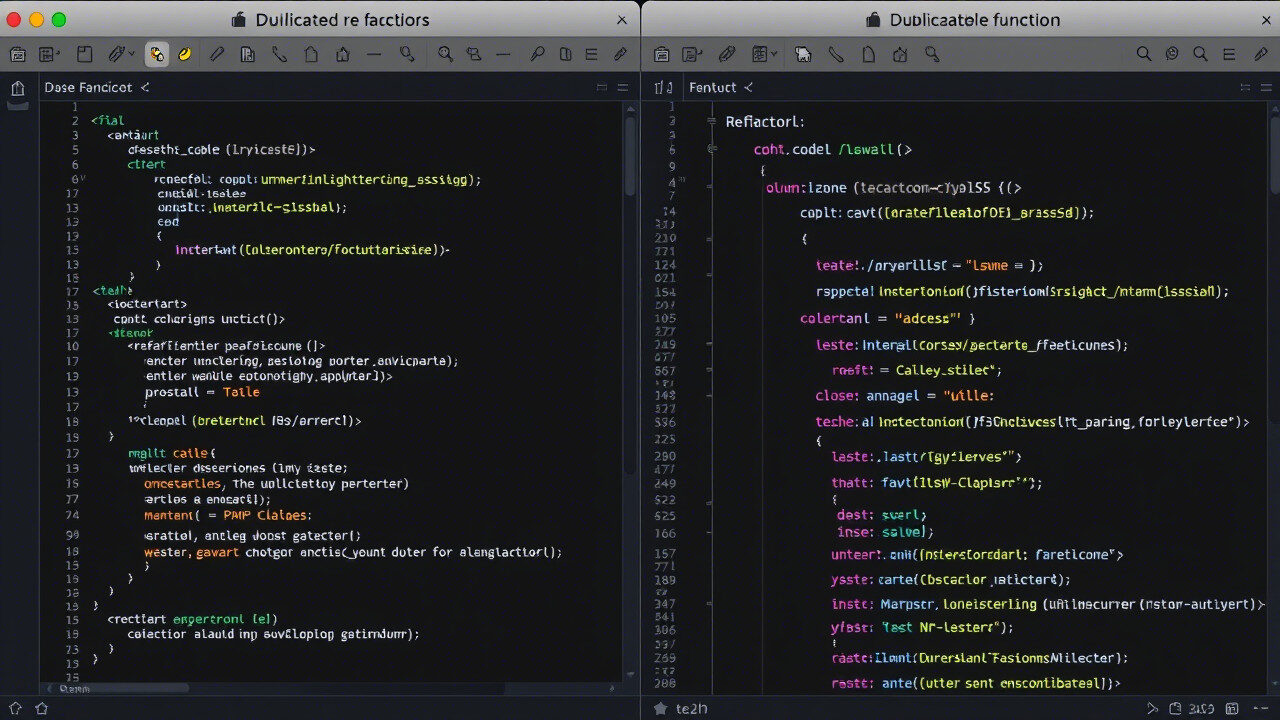One of the biggest nightmares for a developer is when you find the same block of code repeated multiple times across a project. While in some cases it might be completely unavoidable, redundancy should be avoided whenever possible to keep code clean and maintainable. It can really help to make some of these suggestions arise with tools like GitHub Copilot, but knowing how to deal with and refactor duplicated code is an essential best practice in itself. Refactoring for DRY (Don’t Repeat Yourself) will have many implications for the overall quality of your code.
In this article, we will discuss how to eliminate duplication from Copilot’s suggestions through DRY analysis and present a step-by-step overview of its refactoring into more efficient code. In addition, we will learn ways to apply the DRY principles.

Why Is Code Duplication an Issue?
Indeed, it seems an easy way out to be copying and pasting the same piece of code in other parts of your project, but the act of duplicating code opens up a plethora of problems:
- Increased Maintenance Effort: Whenever a change is necessitated, then all those places would need to be changed, greatly increasing the risk of error.
- Poor Readability: Duplicated code tends to stay around for some time and muddle your code base, making it harder for others (or even you) to follow and maintain in the future.
- Increased Bugs: With duplicate code, it will now become possible that somebody might forget to update some parts of the project, thereby creating inconsistencies and bugs.
- Harder Debugging: When the problem arises, you have to deal with another issue, and that is the tracing of where the duplication is being done.
If, against the grain of your effort, you kill off code duplication in your project, some of these problems would, therefore, be avoided, and the quality of the codebase would at least improve a bit.
Step-by-Step Guide to Eliminating Code Duplication in Suggestions
Step 1: Understand the Root Cause of Duplication
Ganbud, you should figure out what the reason for duplication is before you start cleaning bash repetitive codes. They might be:
- Limited context: Sometimes Copilot doesn’t understand fully all of the context for a project, which results in suggestions that really don’t need to repeat.
- Lack of refactoring: If your project hasn’t gone through a complete or partial refactoring in the past few years, duplicate code is probably the natural outcome of your code base.
- Complexity of tasks: Duplicated code is likely to be suggested when the task itself appears too complex for Copilot to abstract.
If one recognizes these causes, then he or she can start judging how duplication should be dealt with in order to best improve Copilot’s suggestions.
Step 2: Refactor to Use Functions and Methods
For getting rid of code duplication effectively, refactoring is one of the best choices in terms of making reusable functions or methods from the code. It eliminates the necessity to repeat blocks of codes by calling their references whenever necessary.
- Identify patterns: Look through the project for repeated code blocks to be abstracted into a function.
- Create helper functions: Extract frequently used codes into one function or method that’s capable of following the DRY principle.
- Edit the remaining: The code must refer to the new function instead of repeated copies themselves.
Refactoring, or making functions into code, is minimizing redundancy while improving a better understanding and also making it easier to maintain the coding.
Step 3: Leverage Libraries and Frameworks
Sometimes, code duplication arises when developers reinvent the wheel. Instead of writing custom code for every task, explore using libraries or frameworks that offer pre-built solutions.
- Use built-in libraries: Many languages and frameworks offer standard libraries with functions that eliminate the need for duplicated code.
- Explore third-party libraries: For specialized tasks (e.g., validation, data manipulation), third-party libraries can save you time and reduce repetitive code.
By relying on existing solutions, you can focus on solving unique problems, rather than writing repetitive code.
Step 4: Apply the DRY Principle
The DRY principle (Don’t Repeat Yourself) is one of the most important coding best practices. It encourages you to reduce duplication by:
- Abstracting repetitive logic into functions, classes, or libraries.
- Using design patterns that help eliminate unnecessary duplication, such as Factory, Singleton, or Strategy patterns.
- Automating tasks like error handling, logging, and data transformation so they are reusable across different parts of the application.
Applying the DRY principle to your code helps make it more robust, maintainable, and scalable.
Step 5: Leverage Copilot’s Suggestions for Refactoring
GitHub Copilot can help you with its suggestions to refactor to better ways of writing code. Here is how to use Copilot for removing code duplication effectively:
- Refactor suggestions: When Copilot shows duplicate code, you ask it for a refactor into a more reusable construct such as a function or a class.
- Optimized Code: Use Copilot to suggest optimized alternatives to the repetitive logic. Copilot can suggest merging duplicate code into a single, reusable function.
- Providing Feedback: If Copilot keeps generating repetitive code, give feedback on such suggestions. This enriches Copilot’s learning, thereby enhancing its ability to suggest more optimized codes.
By refactoring with Copilot, you can reduce code duplication and keep your code clean.
Step 6: Implement Code Reviews and Linting Tools
Once you’ve eliminated most of the repetitive code, it’s crucial to keep your codebase clean going forward:
- Code reviews: Implement regular code reviews to catch any code duplication early on. A second set of eyes can spot redundant code that might otherwise go unnoticed.
- Linting tools: Use linting tools (e.g., ESLint, Pylint) to enforce best practices and prevent code duplication by flagging repeated patterns or complex logic that can be refactored.
By incorporating linting tools and code reviews, you ensure that your codebase stays efficient and follows the DRY principle consistently.
Conclusion: Reducing Code Duplication for Cleaner Code

The eradication of duplicated code is an absolute necessity for clean, maintainable, and efficient code. Understand the root cause, use refactoring techniques, utilize libraries and frameworks, and apply the DRY principle to manage repetitive code. Additionally, use effective GitHub Copilot for refactoring and linting tools and perform code reviews upon code submission to keep your code base on top.
With these strategies in place, the quality of your code can improve greatly along with your development workflow.
Need Expert IT Consulting? Choose TechNow, the Best IT Consulting Company in Germany
TechNow has the finest IT Consulting company in Germany and is here to help with professional insight regarding optimizations of codebase, both eradication of identical code being duplicated, and practices implemented into development. The experienced experts within TechNow fine-tune their consulting service to allow great flexibility in applying best practices-refactoring-framework integration in ensuring that the code lives up to optimum cleanliness, efficiency, and maintainability.








